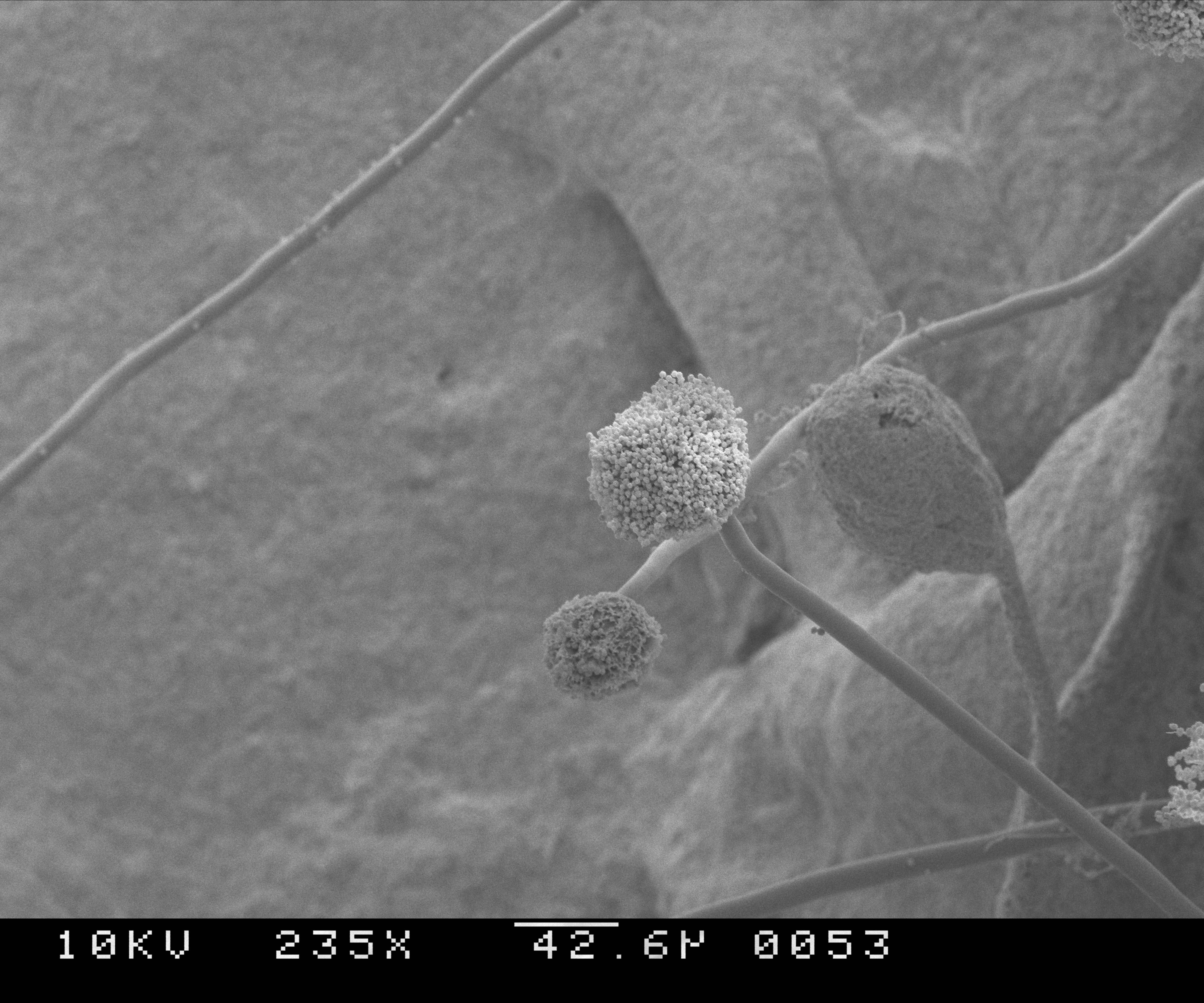|
Citreoviridin
Citreoviridin is a mycotoxin which is produced by ''Penicillium'' and ''Aspergillus ' () is a genus consisting of several hundred mold species found in various climates worldwide. ''Aspergillus'' was first catalogued in 1729 by the Italian priest and biologist Pier Antonio Micheli. Viewing the fungi under a microscope, Miche ...'' species. If rice, corn, cereals or meat products are contaminated with ''Penicillin citreoviridin'', citreoviridin can be produced if the food is stored in a damp place. Consuming food which is contaminated with citreoviridin can cause the disease cardiac beri beri. Furthermore, it damages liver and kidneys. References Further reading * {{refend Citreoviridin ... [...More Info...] [...Related Items...] OR: [Wikipedia] [Google] [Baidu] |
Mycotoxin
A mycotoxin (from the Greek μύκης , "fungus" and τοξικός , "poisonous") is a toxic secondary metabolite produced by fungi and is capable of causing disease and death in both humans and other animals. The term 'mycotoxin' is usually reserved for the toxic chemical products produced by fungi that readily colonize crops. Examples of mycotoxins causing human and animal illness include aflatoxin, citrinin, fumonisins, ochratoxin A, patulin, trichothecenes, zearalenone, and ergot alkaloids such as ergotamine. One mold species may produce many different mycotoxins, and several species may produce the same mycotoxin. Production Most fungi are aerobic (use oxygen) and are found almost everywhere in extremely small quantities due to the diminutive size of their spores. They consume organic matter wherever humidity and temperature are sufficient. Where conditions are right, fungi proliferate into colonies and mycotoxin levels become high. The reason for the production of m ... [...More Info...] [...Related Items...] OR: [Wikipedia] [Google] [Baidu] |
Penicillium
''Penicillium'' () is a genus of Ascomycota, ascomycetous fungus, fungi that is part of the mycobiome of many species and is of major importance in the natural environment, in food spoilage, and in food and drug production. Some members of the genus produce penicillin, a molecule that is used as an antibiotic, which kills or stops the growth of certain kinds of bacteria. Other species are used in cheesemaking. According to the ''Dictionary of the Fungi'' (10th edition, 2008), the widespread genus contains over 300 species. Taxonomy The genus was first described in the scientific literature by Johann Heinrich Friedrich Link in his 1809 work ; he wrote, , () where means "having tufts of fine hair". Link included three species—''Penicillium candidum, P. candidum'', ''Penicillium expansum, P. expansum'', and ''Penicillium glaucum, P. glaucum''—all of which produced a brush-like conidiophore (asexual spore-producing structure). The common apple rot fungus ''P.&n ... [...More Info...] [...Related Items...] OR: [Wikipedia] [Google] [Baidu] |
Aspergillus
'''' () is a genus consisting of several hundred mold species found in various climates worldwide. ''Aspergillus'' was first catalogued in 1729 by the Italian priest and biologist Pier Antonio Micheli. Viewing the fungi under a microscope, Micheli was reminded of the shape of an '' aspergillum'' (holy water sprinkler), from Latin ''spargere'' (to sprinkle), and named the genus accordingly. Aspergillum is an asexual spore-forming structure common to all ''Aspergillus'' species; around one-third of species are also known to have a sexual stage. While some species of ''Aspergillus'' are known to cause fungal infections, others are of commercial importance. Taxonomy Species In March 2010, ''Aspergillus'' covered 837 species of fungi. Notable species placed in Aspergillus include: * '' Aspergillus flavus'' is a notable plant pathogen impacting crop yields and a common cause of aspergillosis. * '' Aspergillus fumigatus'' is the most common cause of aspergillosis in individuals ... [...More Info...] [...Related Items...] OR: [Wikipedia] [Google] [Baidu] |
Cardiac Beri Beri
The heart is a muscular organ found in humans and other animals. This organ pumps blood through the blood vessels. The heart and blood vessels together make the circulatory system. The pumped blood carries oxygen and nutrients to the tissue, while carrying metabolic waste such as carbon dioxide to the lungs. In humans, the heart is approximately the size of a closed fist and is located between the lungs, in the middle compartment of the chest, called the mediastinum. In humans, the heart is divided into four chambers: upper left and right atria and lower left and right ventricles. Commonly, the right atrium and ventricle are referred together as the right heart and their left counterparts as the left heart. In a healthy heart, blood flows one way through the heart due to heart valves, which prevent backflow. The heart is enclosed in a protective sac, the pericardium, which also contains a small amount of fluid. The wall of the heart is made up of three layers: epicardium, ... [...More Info...] [...Related Items...] OR: [Wikipedia] [Google] [Baidu] |


